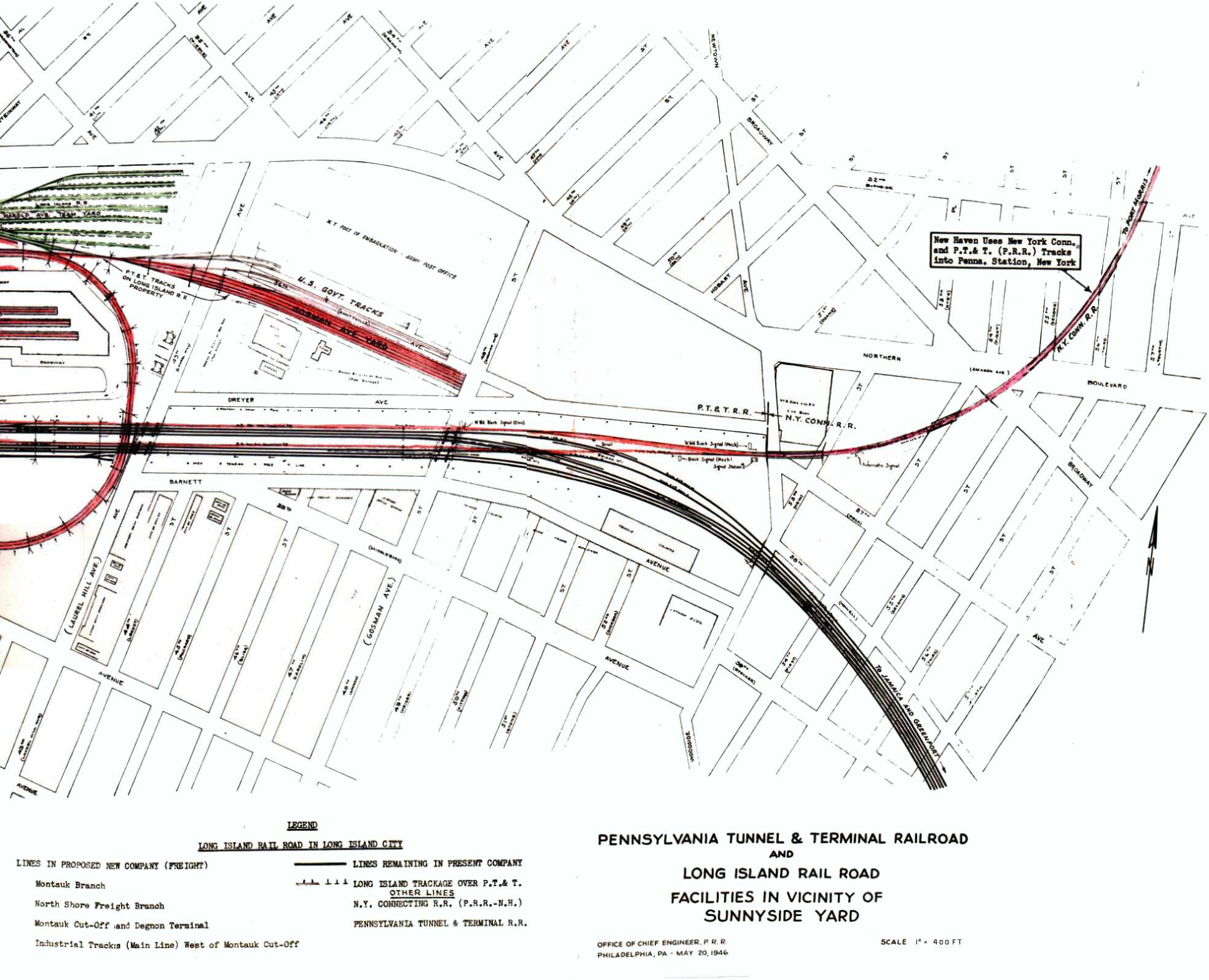Grand central is dead east of times square, given that it is on 42nd street which is the heart of Times Square (Times Square is 42nd and 7th/broadway, Grand Central is centered where park ave hits 42nd street).
Basically the answer is the old Maine "you can't get thair from he-ear" kind of thing, Grand central was the domain of the NY Central and the New Haven, Penn Station was Pennsylvania Railroad/LIRR, and there was no connection in Manhattan between them, so a train coming into Penn Station that wanted to go to Boston before Hell Gate didn't really have any options. With Hell gate, a train coming into penn station from the west would continue east under the river to long Island/Queens, then north and over the Hell Gate to the mainland Bronx, where it could go north on the existing rail lines to Boston.
It is kind of ironic, because Penn Station on the west side was near the old NYC rail yards that connected to the NY Central west side lines , in theory they could have connected to the Central there, but I am not sure logistically you could go up the west side line and then get over to the east Bronx and up to Boston.








